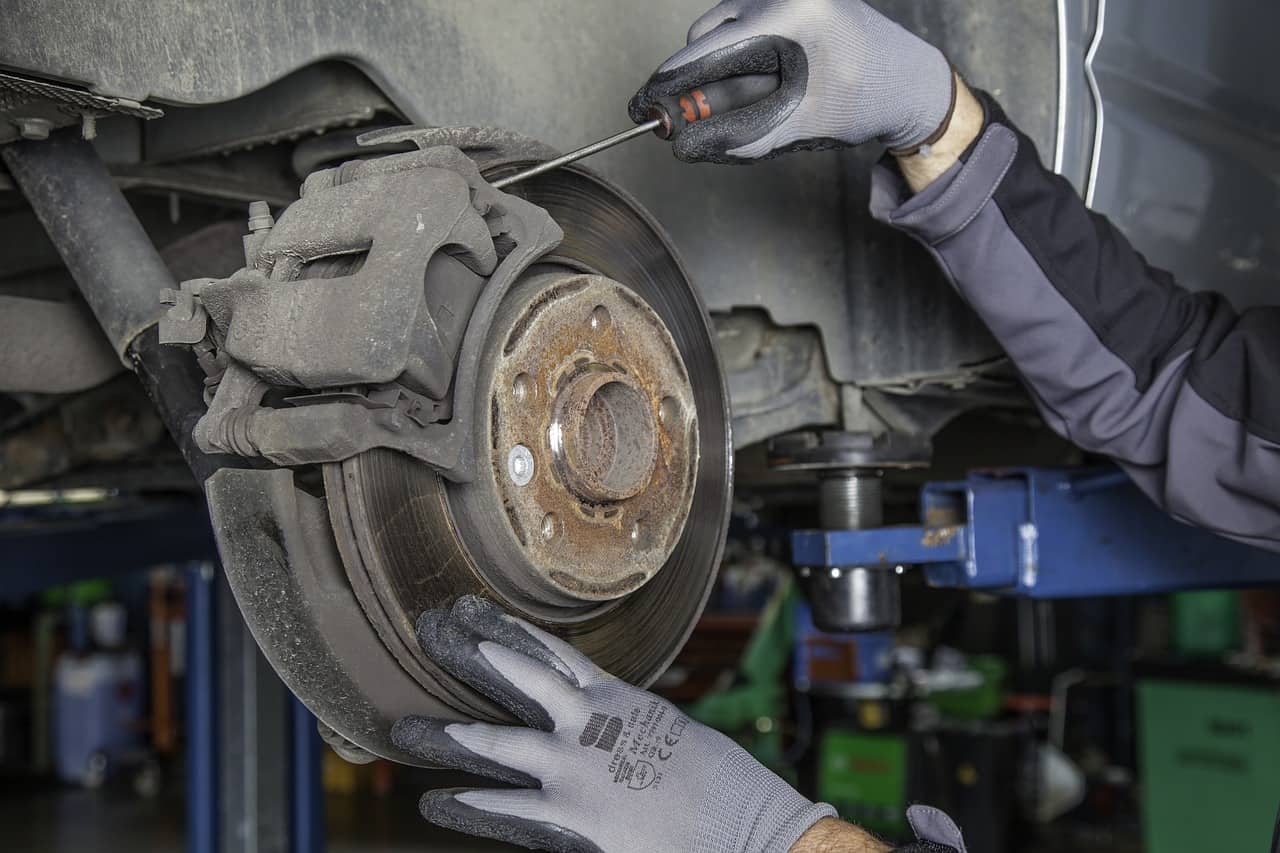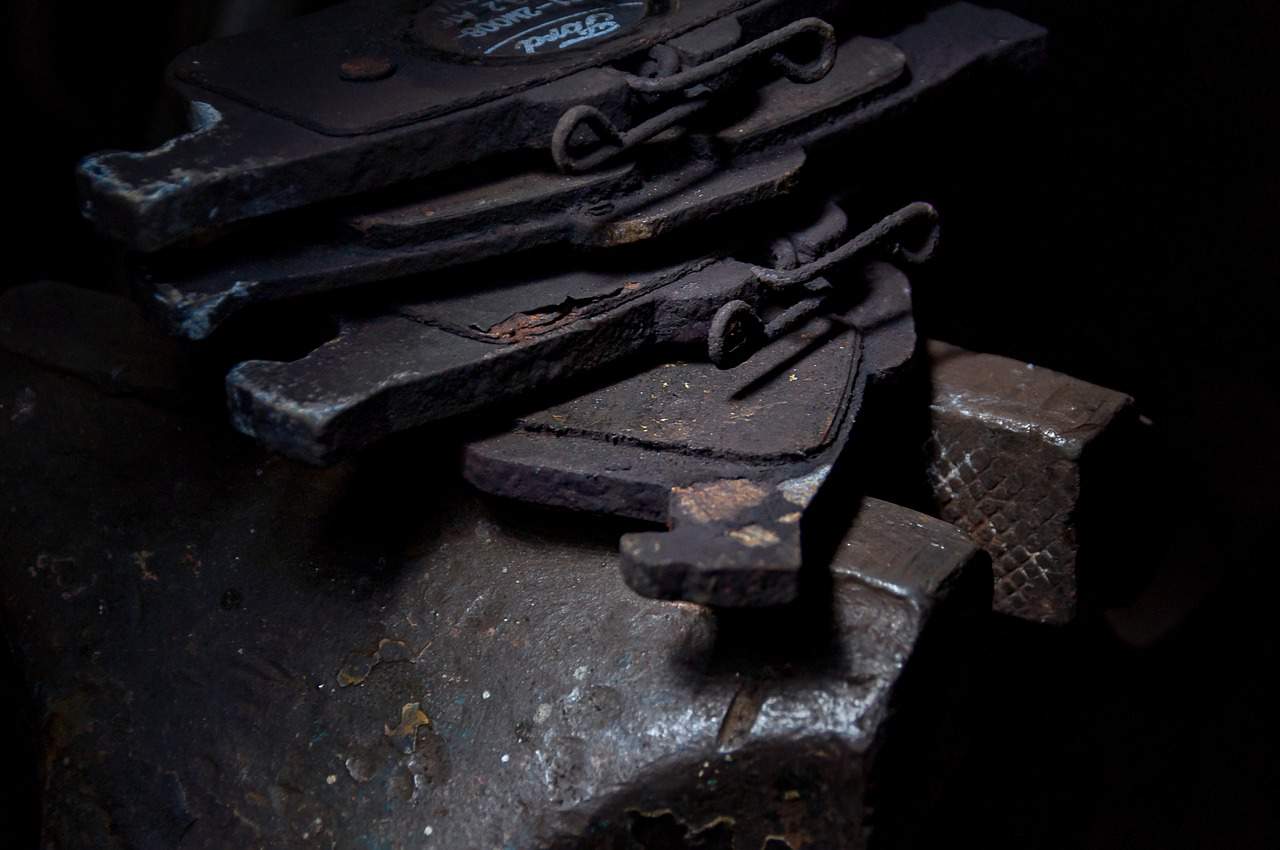Maybe you’ve been driving around town and noticed a few more squeaks coming from your car than normal. Or you may have just rear-ended another car because you were a little too confident in the quality of your brakes.
At one point or another, one of the most complex parts of our cars—the brake assembly—will begin to break down.This is normal for older cars, as wear and tear can affect everything from the spark plugs to the air conditioning system and everything in between. In fact, with proper maintenance and periodic replacement, there should be no long-term consequences to a failing brake system.
Image from Pixabay
However, this is where the problem lies. You may have ignored the squealing coming from your brakes for one too many days, or listened to music so loudly you hadn’t heard it at all. As it turns out, your brakes are smart enough to inform you when problems are coming, and if you don’t heed their warning, you can easily total an older car in brake repair fees.While we’ll be discussing issues with brake fluid and similar issues, the number one problem most people have when dealing with brakes come from brake pads. Your car’s brake pads are the most important element—designed to wear down so that the metallic parts of your car’s assembly don’t come together for disastrous effect.
So how do you know when your brakes are just about ready to go? And can you check your car’s pads periodically to ensure everything is alright, or will you be forced to guess as to when the time has come to replace them?For answers to those questions and many more, here’s what you need to know about replacing your pads.
Brake Anatomy
Before we go into the pads themselves, it’s worth noting the entirety of how your car brakes itself.
In nearly all cars sold in the United States, the system is generally the same and involves the following parts:
- Brake shoe
- Brake pads
- Brake drum
- Brake fluid
- Hydraulics
The entire system starts with the brake drum, which is attached to the wheel itself. The drum rotates at the same speed and with the wheel itself and is attached in a way that pulling the brake drum in any direction will pull the wheel it that same direction. This connection is important for how the rest of the system works.
The brake pad is held closely (but is not connected to) the brake shoe. The shoe is also a circular device that wraps around the inside bezel of the brake drum and keeps within a few inches of the drum.
When accelerating the car or running it on neutral, these two elements are not touching each other. The only time these pieces touch is when the brakes are engaged.
When you press on your brake pedal, the shoe clamps down onto the brake drum, and just how hard it does depends on how hard you press your brake. And to keep your foot from having to exert a great amount of force on the pedal, hydraulics are used.
These hydraulics utilize brake fluid to turn your gentle brake press into enough force to slow down your car and force the shoe onto the drum. However, it is the pad that makes contact between the two, and this is the most crucial step.
The pad is worn down ever so slightly by the revolving pressure of the brake drum, and that pressure and friction likewise slow down the rotation of the brake drum. This slows down the rotation of the wheel, and thus, slows down your car.
The reason the pad is so important is that without the pad, larger metal pieces, such as the brake drum and brake shoe would be in contact with each other. Metal to metal contact at such high velocity is highly dangerous and can cause superheating, fusing, welding, and a multitude of other issues that can wreak havoc on your car.
Brake Pad Lifespan
If we’re strictly speaking about the number of miles you can put on your pads before they need to be replaced, there is no one clear answer.
Image from Pixabay
The often-cited metric is about 30,000 miles or so, but this metric is heavily dependent upon averages. For instance, if you live in a city or tend to commute to work, you’ll be utilizing your brakes far more often than if you lived in the countryside or other rural parts of the country. Likewise, the way you drive has a profound impact on the lifespan of your brakes.Speaking of physics, braking is the least efficient way your car utilizes energy. When accelerating, your car is using energy to propel you forward. And when you press neither the brakes or the gas, your car continues to roll based on the energy generated by the engine earlier on.
Repairs and Replacement
Luckily for car owners, pad manufacturers know that the only way to remind owners to replace their pads is to keep them accountable and build in a way for the pads to alert the drivers when they’re getting too low.This feature is called an indicator and is extremely important to note when it goes off. The indicator is usually a small metal device attached to the pads themselves. When the pads are worn down to dangerous levels, the indicator will press against the brake drum, giving off a familiar screeching sound designed to be loud but ultimately harmless.
That is unless you fail to replace your pads. But to be sure that the sound coming from your brakes is from the indicator and not the shoe bearing down on the drum, you’ll need to look for yourself.Look to your pads in between the spokes of your wheels. Your pads should be visible without too much effort or maneuvering, and you should see the small pad against the metal of the drum. You’ll want to see at least one-fourth of an inch of padding. Any less, and it’s time to take your car in to get new brakes.
Being able to manually check your pads can be extremely helpful for several reasons. Other issues with brakes are common, so knowing where to eliminate certain options can save you time and money at the mechanic’s shop. For instance, if you find your brake pedal is harder to press down, but your pads look good, you may want to check your brake fluid.In either case, we highly recommend a visual checkup on all of your pads the moment you hear a loud screech. While it is more likely than not that your car has an indicator, if you’re pressing the shoe onto the drum without a pad, you won’t make it very long without permanently damaging the entire array.
Final Thoughts
As you can see, there’s something to be said about paying just a little bit of attention to your pads.
We recommend going for a drive with the windows down and no music every once in a while to ensure that you’re not missing the sound of your indicator, and if you have any suspicions about your pads, don’t hesitate to call your local trusted mechanic for individual advice.
Remember that replacing your pads is comparatively far less expensive than replacing wheels as well as the entire brake assembly. If you hear any sounds coming from your car, don’t take the chance, and get right on your pads.
And while we can’t provide a more specific answer to when exactly it’s time to replace your pads, we do hope that this information has given you a good place to start thinking and to start looking into the future of your car’s brake system.
While it may not be something at the forefront of your mind every time you get behind the wheel, remember that your life often depends on those little pads on the sides of your tires. Serve them well, and they will certainly return the favor.


